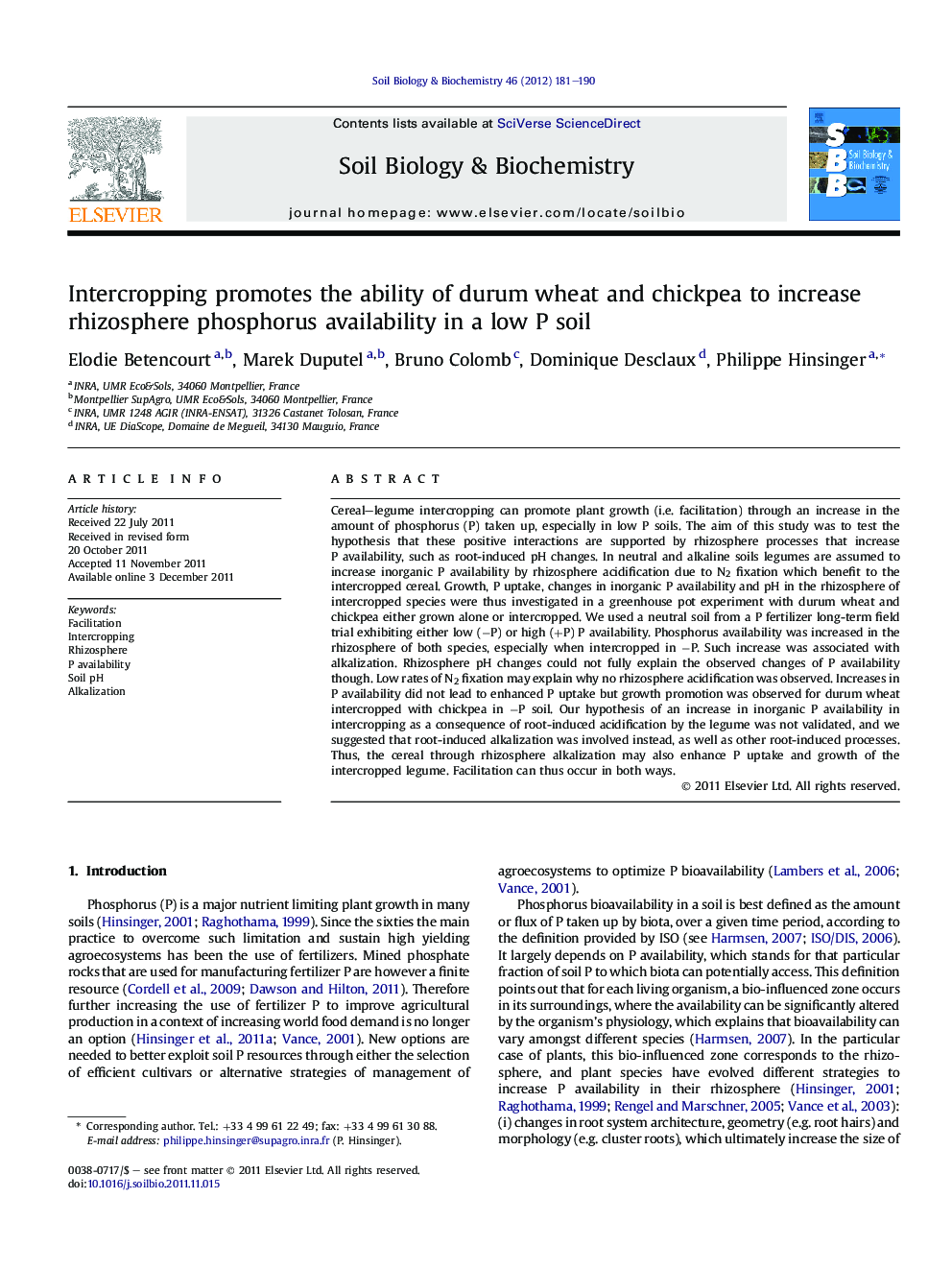| کد مقاله | کد نشریه | سال انتشار | مقاله انگلیسی | نسخه تمام متن |
|---|---|---|---|---|
| 2025021 | 1542638 | 2012 | 10 صفحه PDF | دانلود رایگان |

Cereal–legume intercropping can promote plant growth (i.e. facilitation) through an increase in the amount of phosphorus (P) taken up, especially in low P soils. The aim of this study was to test the hypothesis that these positive interactions are supported by rhizosphere processes that increase P availability, such as root-induced pH changes. In neutral and alkaline soils legumes are assumed to increase inorganic P availability by rhizosphere acidification due to N2 fixation which benefit to the intercropped cereal. Growth, P uptake, changes in inorganic P availability and pH in the rhizosphere of intercropped species were thus investigated in a greenhouse pot experiment with durum wheat and chickpea either grown alone or intercropped. We used a neutral soil from a P fertilizer long-term field trial exhibiting either low (−P) or high (+P) P availability. Phosphorus availability was increased in the rhizosphere of both species, especially when intercropped in −P. Such increase was associated with alkalization. Rhizosphere pH changes could not fully explain the observed changes of P availability though. Low rates of N2 fixation may explain why no rhizosphere acidification was observed. Increases in P availability did not lead to enhanced P uptake but growth promotion was observed for durum wheat intercropped with chickpea in −P soil. Our hypothesis of an increase in inorganic P availability in intercropping as a consequence of root-induced acidification by the legume was not validated, and we suggested that root-induced alkalization was involved instead, as well as other root-induced processes. Thus, the cereal through rhizosphere alkalization may also enhance P uptake and growth of the intercropped legume. Facilitation can thus occur in both ways.
► Both durum wheat and chickpea increase P availability in their rhizospheres.
► P availability was enhanced especially when species were intercropped in a low P soil.
► Increases in P availability occurred even with root-induced alkalization in a neutral soil.
► Other rhizosphere processes than root-induced pH changes were involved in increasing P availability.
► Chickpea facilitated durum wheat in a low P soil, and vice versa.
Journal: Soil Biology and Biochemistry - Volume 46, March 2012, Pages 181–190